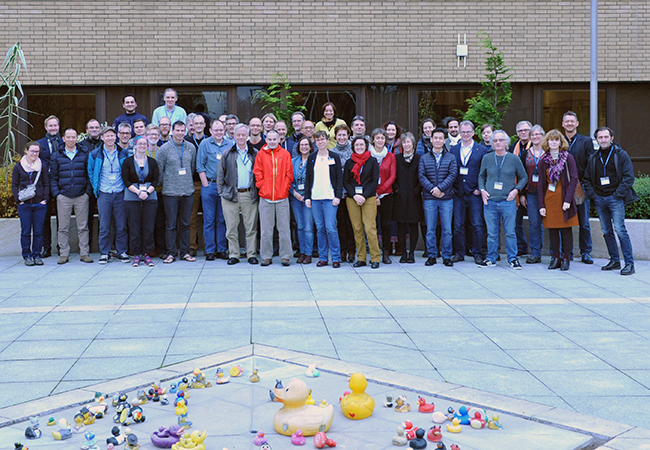ECMWF | Reading | 4-6 December 2017

Workshop Description
Passive microwave radiometry covering frequencies from 1 to 10 GHz provides measurements of the Earth’s surface that are largely independent of varying atmospheric conditions. Since the late 70’s satellite measurements have been used to infer geophysical variables ranging from sea surface temperature, sea ice coverage to soil moisture. With the arrival of L-band sensors, new capabilities have been added and substantial progress has been made in retrieving additional parameters, combining the measurements to generate thematic data records, and assimilating the measurements in forecasting systems. The workshop looked at applications that can benefit from the synergistic exploitation of low frequency passive microwave measurements but also on the combined usage of active and passive observations. Four topical areas were addressed: Sea ice and predictability in Polar Regions, sea surface salinity and ocean circulation, soil moisture and flood forecasting, weather forecasting and climate monitoring.
Presentations
| Advancing the science to improve global forecasts: ECMWF in 2017 F. Rabier (ECMWF) |
|
| Logistics and Workshop Objectives P. de Rosnay (ECMWF) and S. Mecklenburg (ESA) |
|
| L-band radiometry from space: SMOS, SMAP, AQUARIUS Y.H. Kerr (CESBIO) |
|
| Present and future ocean-atmosphere CO2 fluxes, and EO measurement needs A. Watson (Exeter University) |
|
| European Contribution to the Monitoring of Essential Climate Variables from Space J.-N. Thepaut (ECMWF) |
|
| Marine Carbon from Space J. Shuttler (Exeter University) |
|
| Using SMOS observations in a carbon cycle data assimilation system M. Scholze (Lund University) |
|
| Sea ice and polar predictions S. Tietsche (ECMWF) |
|
| Operational ice modelling and forecasting, sea ice data assimilation, impact of satellite observations L. Bertino (NERSC) |
|
| Advantages of low frequency microwave radiometry for sea ice observation - from research to operational applications L. Kaleschke (UHH) |
|
| Snow on sea ice retrieval using microwave radiometer data R. Tonboe (DMI) |
|
| Monitoring of soil freeze and thaw processes by L-band radiometry: implications for monitoring of methane stocks in Northern latitudes K. Rautiainen (FMI) |
|
| The potential use of passive microwave satellite data within the Copernicus Emergency Management Service - Floods C. Baugh (ECMWF) |
|
| Land surface data assimilation and downscaling using SMAP, SMOS, and AMSR observations R. Reichle (NASA) |
|
| Neural networks retrievals and applications: what we learnt from SMOS N. Rodriguez (CESBIO) |
|
| High resolution soil moisture from passive/active microwave and optical data synergy for agricultural applications M.-J. Escorihuela (isardSAT) |
|
| How is L-Band remote sensing contributing to agricultural applications? A. Al Bitar (CESBIO) |
|
| Relevance of passive microwave data for the activities in the Copernicus Marine Environment Monitoring Service (CMEMS) and Mercator E. Remy (Mercator Ocean) |
|
| SMOS ocean observations: main results and achievements N. Reul (IFREMER) |
|
| The use and impacts of sea surface temperature from passive microwave measurements A. O'Carroll (EUMETSAT) |
|
| L-band, and its synergistic use for ocean and climate applications T. Lee (JPL / NASA) |
|
| Low-frequency passive microwave observations for an all weather and high spatial resolution characterization of the ocean surface and sea ice C. Prigent (OBSPM) |
Workshop summary 
Contact
ECMWF
events@ecmwf.int
